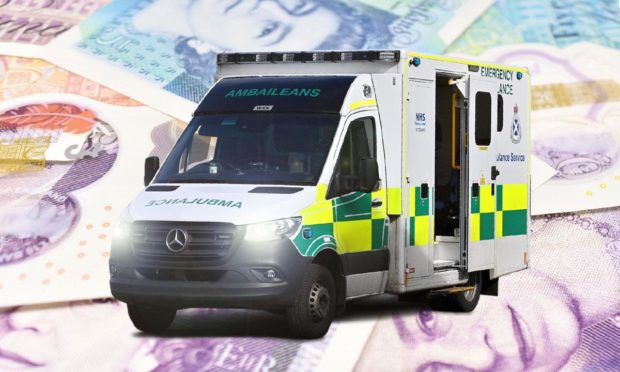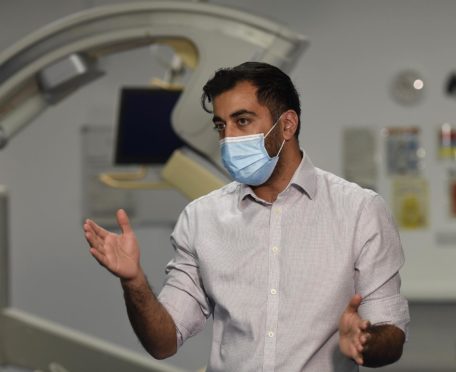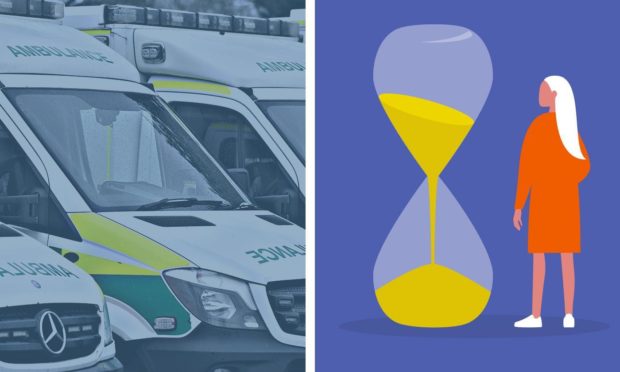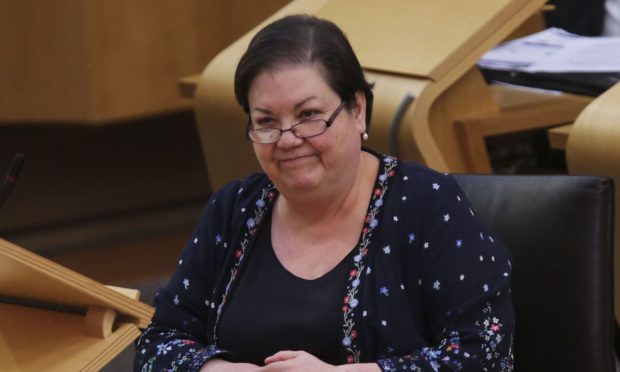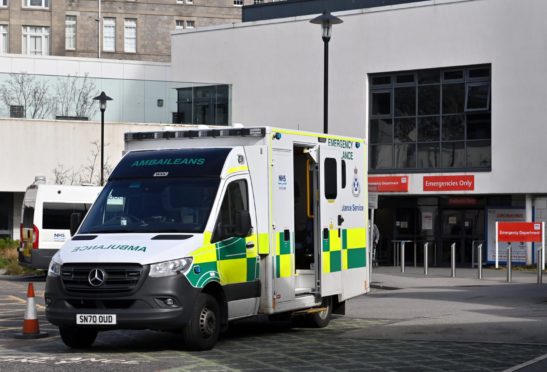A £20 million government cash boost to bolster Scotland’s struggling ambulance service has been criticised as “too little, too late”.
Horror stories about astronomical delays have dominated headlines across the nation in recent months.
The dire situation is the result of A&E departments still operating under Covid restrictions, and buckling under the pressure of scores of patients arriving at hospital doors.
That means ambulances are often left waiting hours to drop off casualties, before rushing to their next call-out.
The Scottish Government today announced that 300 extra employees are being recruited to fill gaps in the beleaguered service as part of a multi-million-pound investment.
Health Secretary Humza Yousaf said the cash boost shows the government is “determined to ensure [paramedics] have the support needed to meet patient demand as the NHS continues to remobilise”.
The recruitment drive will bring in dozens of paramedics, technicians, patient transport staff and advanced professionals to the north and north-east specifically.
But opposition politicians have poured scorn on the statement – arguing that the cash is not “new money” and nor will it answer the problems currently leaving patients in the lurch.
Ambulance staff ‘completely overwhelmed’
Scottish Conservative leader Douglas Ross said years of insufficient funding had come home to roost during the Covid crisis.
And Mr Ross, who represents Moray as an MP and MSP, accused the health secretary of trying to “spin a positive picture”.
“This is too little, too late from the SNP Government,” he said.
“During their 14 years in charge, they have failed to ensure that ambulance services across the north-east have been fully resourced and fully staffed.
“That has left our heroic ambulance staff completely overwhelmed during the pandemic.
“SNP ministers seem keen to pat themselves on the back for this announcement.
“The reality is this funding does not go far enough or quickly enough to tackle the issues facing ambulance services in our rural communities.
“Many of these new staff won’t even be in place until next year despite the crisis happening right now.
“It is typical of the SNP to try and spin a positive picture, rather than ensuring our NHS services have all the resources they require.”
‘An old promise made with old money’
Scottish Labour’s shadow health secretary, Jackie Baillie, was similarly dubious about the announcement.
She said: “Ambulance services are under immense pressure and need all the support they can get.
“But this is nothing more than an old promise made with old money but it won’t deliver more resource until next year.
“If the people of Scotland are to have a functioning ambulance service then the SNP government must put its money where its mouth is and support the service properly.”
What difference will the money make?
The boost follows a five-year scheme to address issues with demand and capacity across the Scottish Ambulance Service.
A total of 296 additional ambulance service staff are being recruited.
The £20m comes as part of a £1 billion NHS recovery plan published last week, and will be directed to the parts of Scotland “under the most pressure”.
- An extra 69 frontline workers – a mixture of paramedics, newly qualified paramedics and technicians – along with nine patient transport service staff, will be located across the north region by April 2022.
- Two double-crewed ambulances will also be introduced in Aberdeen, along with new 24/7 ambulances at Keith, Alness and Tain.
- Two additional low acuity resources will be stationed in Aberdeen to help with urgent GP requests.
- There will also be an increase in the number of advanced practitioners (APs) in Aberdeen and Inverness. APs are experienced health professionals who manages the complete clinical care for their patient.
The rest of the 296 additional staff are made up of 139 in the west region and 88 in the east region, all of whom are frontline staff.
Health secretary praises staff
Mr Yousaf said: “Our ambulance staff have been at the heart of the response to the coronavirus pandemic and we all owe them a huge debt of gratitude.
“These additional resources show that this government is determined to ensure they have the support needed to meet patient demand as the NHS continues to remobilise.
“Our recent recovery plan targeted over £1 billion of investment over the next five years across the whole health system to increase capacity and ensure the health service is ready for the challenges ahead.”
Better work/life balance for crews
Chief executive of the SAS, Pauline Howie, insisted the cash will make a massive difference.
She said: “This funding is great news for the service and is allowing us to continue to increase our investment in new frontline staff, new ambulances and new vehicles at pace.
“These new resources will ensure we continue to deliver the very best patient care by boosting capacity and increasing our resilience in communities across Scotland.
“They’ll also complement our dedicated staff who have worked tirelessly over the last 18 months in extremely demanding circumstances.
“The reduction in on-call working will also improve the work/life balance of staff in the north of Scotland, as well as providing increased cover for the respective areas.
“Additional stations where on-call working will also be eliminated or reduced are currently being identified.”
You can read the full statement issued today here.
